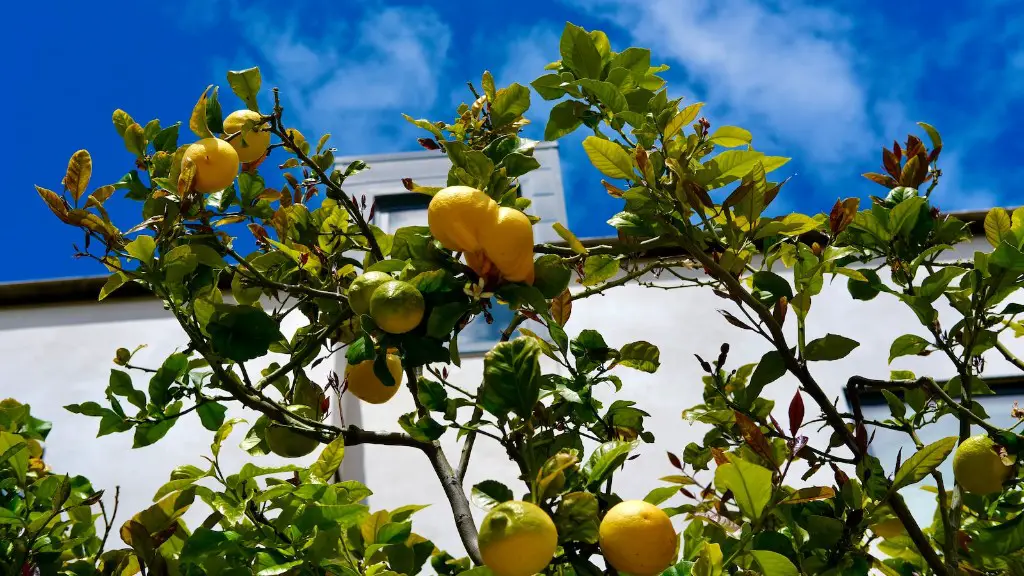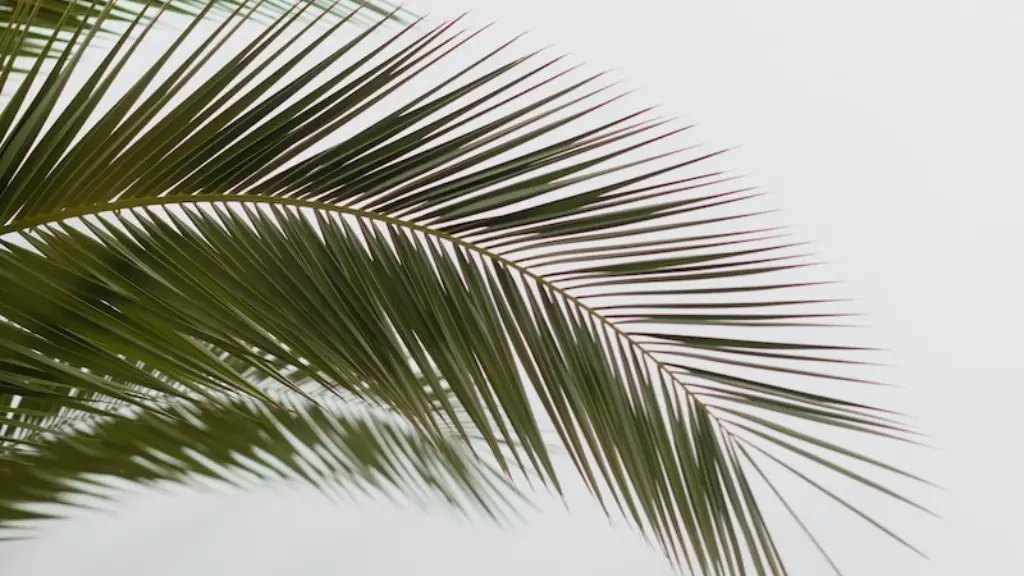Safety Considerations
When it comes to trimming your palm tree, safety is of utmost importance. Always wear protective gear, and never attempt to undertake any branch removal work that requires you to climb higher than a few feet up the tree. Always ensure you’ve read and followed the manual or instructional guide before attempting to trim the tree, and take extra care when performing any potentially hazardous tasks- such as sawing off a branch or climbing the tree to place a ladder. Additionally, you should check and call the local electric company if your tree is too close to overhead power lines.
Trimming Tools
To trim a palm tree, you will need a few basic tools. A basic garden tool set should include a pair of pruning shears, and a pair of loppers for branch cutting – both of which are essential for trimming. Depending on the size of the tree, you may also require the use of a ladder, a saw and a pole pruner. It is recommended that the tools you use are sharp and sturdy, as they will make the job much easier.
Conducting a Visual Inspection
The first step in trimming your palm tree is to conduct a visual inspection of the tree. It is important to look for any dead or damaged branches as they may need removal. Make sure to inspect the entire tree and to take note of the health of the branches. You should also look for any potential hazards, such as branches too close to power lines.
When is the Right Time to Trim?
Palm tree trimming should be done in spring or early summer. This period is when the tree is less likely to suffer as much damage due to the adverse weather conditions. Additionally, trimming during the warmer months ensures that your tree receives most of its nutrients from the ground before being cut.
Trimming Technique
Once you have identified the branches requiring trimming, you will then need to decide on the best technique. This can vary from Palm to Palm, but typically pruning shears and loppers should be used for smaller branches, and a saw for thicker branches. The key is to avoid leaving a long stub when you make each cut, as this can be damaging to the tree.
Cleaning Up
Once you’ve finished trimming, it is important to clean up the area. This includes removing any excess debris or falling leaves. This will ensure that your palm tree is as healthy as possible, allowing it to grow to its maximum potential.
Protecting Your Tree from Disease and Insects
Whilst trimming your palm tree, it is important to look for signs of disease and insect infestation. This could be anything from discolored branches to abnormal growth patterns. If you spot any of the signs, it is recommended that you contact a qualified arborist immediately.
Rejuvenating Your Palm Tree
Rejuvenation is a form of trimming your palm tree to promote new, healthy growth. It is most often done in early summer and should be done with the same precautionary measures you would use when normal trimming. It is important to ensure you remove only the necessary branches, as this will ensure the tree receives enough nutrition and avoid weakening the root system.
Pruning Techniques for Different Species
The trimming technique for different species of palm trees can vary greatly. This can range from simple pruning to extensive thinning – depending on the species and condition of the tree. As such, it is important to research the specific pruning techniques for each species before starting the job.
Boosting the Tree’s Recovery
After trimming, it is important to help your tree recover and remain healthy. To do this you should adhere to a few basic tips such as ensuring your tree receives plenty of water, avoiding heavy fertilizers and keeping it free from weeds and moss. Additionally, controlling pests and disease is vital and can be done with an insecticidal or fungicide spray.
Aftercare
After you’ve completed all your pruning, it is important to practice regular and consistent aftercare to ensure the tree continues to stay healthy. This can be as simple as monitoring the affected branches and removing any dead, dying or diseased ones as and when required. Additionally, it is important to inspect the tree regularly for any potential hazards or signs of infection.
Tips for Hiring an Arborist
When it comes to pruning palm trees, it is recommended that you seek the help of a qualified arborist. Before doing so, it is important to make sure the arborist has experience in palm tree trimming and that they are suitably insured. To ensure the tree is properly pruned, it is essential to recommend the relevant pruning methods for the species of tree being pruned.
Palm Tree Selections that Thrive in Your Region
Before selecting a palm tree for trimming, it is important to consider the local climate. Some species of palm trees are better suited to certain climates than others. It is therefore recommended that you research the best types of palm trees suited to your region, as this will ensure optimal results.
Equipment Maintenance
Once you’ve finished trimming, it is important to ensure you clean and maintain all of the equipment you used. This includes inspecting the tools for any wear and tear, and ensuring they are properly oiled and stored away. Doing this will also ensure optimal results when you next use the tools.
Regularly Scheduled Maintenance
It is recommended that you schedule regular maintenance for your palm tree. This will ensure it remains healthy and vibrant throughout the year. A good rule of thumb is to trim the tree twice a year, mid summer and mid winter. This will give the tree enough time to recover and grow as much new foliage as possible.



